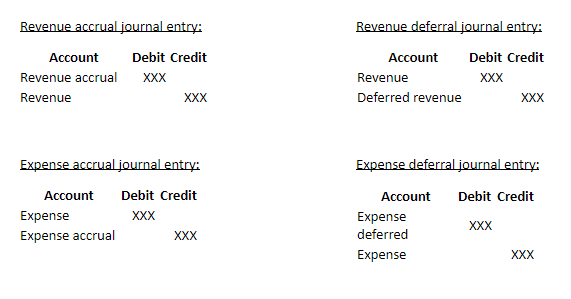Content

For instance, the account Accumulated Depreciation will have a credit balance since it is credited for the amounts that are debited to Depreciation Expense. Expenses occurred faster than the agreed upon prepayments. The most important concept to understand when dealing with debits and credits is the total amount of debits must equal the total amount of credits in every transaction. The “rule of debits” says that all accounts that normally contain a debit balance will increase in amount when debited and reduce when credited.
Congressional Research Service Report: ‘Credit Union System – Developments in Lending & Prudential Risk Management’ (Part 2 of 2) – Insurance News Net
Congressional Research Service Report: ‘Credit Union System – Developments in Lending & Prudential Risk Management’ (Part 2 of .
Posted: Tue, 30 Nov 2021 22:54:14 GMT [source]
The nominal value of a company’s stock is an arbitrary value assigned for balance sheet purposes when the company is issuing shares—and is generally $1 or less. “Accounts payable” refers to an account within the general ledger representing a company’s obligation to pay off a short-term debt to its creditors or suppliers. Debit cards allow bank customers to spend money by drawing on existing funds they have already deposited at the bank, such as from a checking account. The first debit card may have hit the market as early as 1966 when the Bank of Delaware piloted the idea.
Is Common Stock A Liability Or Asset?
Expenses drain a company of an asset, like cash, or add to a liability, like accounts payable. In an expense transaction, a debit increases the expense account balance, and a credit decreases the balance. The world of accounting revolves around, not surprisingly, accounts. The accounts listed on an income statement record a company’s income and expenses for a specified period.
- The unearned revenues account is an example of a liability.
- A business must engage in similar activities to make sure that all transactions and events are recorded correctly.
- An asset is something a company owns, and a liability is something owed.
- Want to learn how software can help speed up the process of bookkeeping?
- In many respects, this Cash account resembles the “register” one might keep for a wallet-style checkbook.
Note that debits are always listed first and on the left side of the table, while credits are listed on the right. Liability accounts such as Accounts Payable, Notes Payable, Wages Payable, Interest Payable, Income Taxes Payable, Customer Deposits, Deferred Income Taxes, etc. Hence, a credit balance in Accounts Payable indicates the amount owed to vendors.
What Is A Normal Account Balance?
Suffice it to say, there are many potential source documents, and this is just a small sample. Source documents usually serve as the trigger for initiating the recording of a transaction. The source documents are analyzed to determine the nature of a transaction and what accounts are impacted. Source documents should be retained as an important part of the records supporting the various debits and credits that are entered into the accounting records. Concurrent with delivering completed blueprints to one of her clients, she also prepared and presented an invoice for $2,500.
Marcus Invest Review – Forbes Advisor – Forbes
Marcus Invest Review – Forbes Advisor.
Posted: Tue, 30 Nov 2021 20:34:39 GMT [source]
Since the normal balance for owner’s equity is a credit balance, revenues must be recorded as a credit. At the end of the accounting year, the credit balances in the revenue accounts will be closed and transferred to the owner’s capital account, thereby increasing owner’s equity. A disbursement will be supported by the issuance of a check. A sale might be supported by an invoice issued to a customer. A bank deposit slip may show collections of customer receivables.
What Items Come In Trial Balance?
These statements and reports may be used by some third parties like bankers, investors or creditors, and are needed to provide information to government agencies, such as the IRS. For example, if the writer spends $25 on printer ink, she would enter a transaction that debits office supplies expenses for $25 and credits cash by $25.
Balance Sheet accounts are assets, liabilities and equity. Recording transactions into journal entries is easier when you focus on the equal sign in the accounting equation. Assets, which are on the left of the equal sign, increase on the left side or DEBIT side. Liabilities and stockholders’ equity, to the right of the equal sign, increase on the right or CREDIT side. Then we translate these increase or decrease effects into debits and credits. Cost of goods sold is an asset v account with a normal debit balance.
What Is The Effect Of Merchandise Inventory Beginning On The Cost Of Goods Sold?
On the other hand, expenses and withdrawals decrease capital, hence they normally have debit balances. The balance of an account increases on the same side as the normal balance side. Therefore, asset, expense, and owner’s drawing accounts normally have debit balances. Liability, revenue, and owner’s capital accounts normally have credit balances.
- For example, an individual might maintain a checkbook for recording cash disbursements.
- Accumulated depreciation is the total amount of depreciation expense allocated to a specific asset since the asset was put into use.
- Enabling organizations to ensure adherence with ever-changing regulatory obligations, manage risk, increase efficiency, and produce better business outcomes.
- “Before” and “after” examples were used to develop the illustrations.
- Sales discounts is a contra revenue account with a normal debit balance.
All updates to accounts are made by transactions that are composed of debits and credits. The most basic rule for transactions is that the sum of the debits must equal the sum of the credits.
Normal Balance Of Accounts Double Entry Bookkeeping Bookkeeping Accounting Accounting And Finance
Reconciliation is an accounting process that compares two sets of records to check that figures are correct, and can be used which of the following accounts has a normal credit balance for personal or business reconciliations. Debit pertains to the left side of an account, while credit refers to the right.

Allowance for uncollectible accounts is a contra asset account on the balance sheet representing accounts receivable the company does not expect to collect. When customers buy products on credit and then don’t pay their bills, the selling company must write-off the unpaid bill as uncollectible. Allowance for uncollectible accounts is also referred to as allowance for doubtful accounts, and may be expensed as bad debt expense or uncollectible accounts expense.
What Is The Key Principle And Practice Of Double Entry Accounting?
Thus, Matthew is told that his account is being “credited” when he makes a deposit. The previous chapter showed how transactions caused financial statement amounts to change. “Before” and “after” examples were used to develop the illustrations.
Does accounts receivable have a normal credit balance?
Why? – because the amount of the debits is greater than the amount of the credits. Accounts Receivable will normally (In your class ALWAYS) have a debit balance because it is an asset. … State if it is a debit or credit balance.
If you are using a software system, there really isn’t much extra effort involved in using the accrual method. The accounts payable account is a/an _______, and it has a normal ________ balance. AccountsCreditAssets–Expenses–Liability+Equity+Income+Remember when Bob’s Barber Shop sold some hair gel for $45 cash? Well, since we know there is always an equal credit entry to a debit entry, we know we must credit an account in order to balance out the transaction. The sale of the hair gel would also be labeled as income for Bob’s Barber Shop, meaning a $45 credit is in order for the income account.
The account on left side of this equation has a normal balance of debit. The accounts on right side of this equation have a normal balance of credit. The normal balance of all other accounts are derived from their relationship with these three accounts. Here’s a table summarizing the normal balances of the accounting elements, and the actions to increase or decrease them. Notice that the normal balance is the same as the action to increase the account. The same rules apply to all asset, liability, and capital accounts. You could picture that as a big letter T, hence the term “T-account”.
- For example, it could be because the customer has overpaid, whether due to an error in your original invoice or because they’ve accidentally duplicated payment.
- Finding the proper amount for the allowance for doubtful accounts is not an instant process.
- When you place an amount on the normal balance side, you are increasing the account.
- Because debits equal credits, double-entry accounting prevents some common bookkeeping errors.
- Accounting involves recording financial events taking place in a company environment.
- If accountants see the cash account holding a negative balance, they check first for errors and then investigate whether the account is overdrawn.
If you encounter AR credit balances on a regular basis, it may indicate that there’s a pattern of inaccurate billing from your accounting team. Once you’ve identified a credit balance, you need to work out what to do with it. In-depth guidelines should be outlined in your accounts receivable credit balance policy. If your client isn’t going to use the excess cash in their account, you can create a refund for them. You could also get in touch with the payee and offer upgrades or other services to justify the payment.

A monthly reconciliation should be performed to make sure that the checkbook accounting system has correctly reflected all disbursements. A business must engage in similar activities to make sure that all transactions and events are recorded correctly. Much of the work performed by a professional accountant relates to the design, implementation, and evaluation of properly functioning control systems. A dangling debit is a debit entry with no offsetting credit entry that occurs when a company purchases goodwill or services to create a debit. As a quick example, if Barnes & Noble sold $20,000 worth of books, it would debit its cash account $20,000 and credit its books or inventory account $20,000. This double-entry system shows that the company now has $20,000 more in cash and a corresponding $20,000 less in books.

Liabilities are debts your business owes, such as loans, accounts payable, and mortgages. You record an expense when you receive goods or services, even though you may not pay for them until later. Income earned in one period is accurately matched against the expenses that correspond to that period so you see a clearer picture of your net profits for each period. A journal is a place to record the transactions of a business. The typical journals used to record the chronological, day-to-day transactions are sales and cash receipts journals and a cash disbursements journal. A general journalis used to record special entries at the end of an accounting period.
However, you would also want to make a separate entry in your accounts receivable ledger so you keep track of all customers that owe you money. For liability, equity and revenue accounts, the normal balance is a credit balance. Whether the normal balance is a credit or a debit balance is determined by what increases that particular account’s balance has.
Author: Christopher T Kosty

Recent Comments